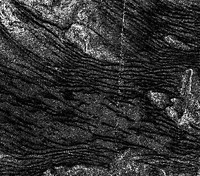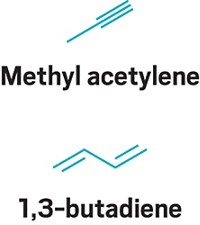Advertisement
Grab your lab coat. Let's get started
Welcome!
Welcome!
Create an account below to get 6 C&EN articles per month, receive newsletters and more - all free.
It seems this is your first time logging in online. Please enter the following information to continue.
As an ACS member you automatically get access to this site. All we need is few more details to create your reading experience.
Not you? Sign in with a different account.
Not you? Sign in with a different account.
ERROR 1
ERROR 1
ERROR 2
ERROR 2
ERROR 2
ERROR 2
ERROR 2
Password and Confirm password must match.
If you have an ACS member number, please enter it here so we can link this account to your membership. (optional)
ERROR 2
ACS values your privacy. By submitting your information, you are gaining access to C&EN and subscribing to our weekly newsletter. We use the information you provide to make your reading experience better, and we will never sell your data to third party members.
Astrochemistry
Chemists find possible explanation for Titan’s haze
Lab experiments suggest low-temperature photochemistry produces the moon’s hazy PAHs
by Sam Lemonick
October 16, 2018
| A version of this story appeared in
Volume 96, Issue 42
The thick, hazy atmosphere of Saturn’s moon Titan has provided a curious mystery for scientists. In 2005, the European Space Agency’s Huygens lander detected atmospheric benzene on Titan via mass spectrometry, and evidence from other sources has suggested the presence of polycyclic aromatic hydrocarbons (PAHs)—possible sources of Titan’s haze. PAHs create haze here on Earth, and chemists have long understood how benzene forms the multiringed molecules at high temperature, but conditions on Titan are downright frigid, ranging from about -70 °C to -200 °C. Now, scientists using laboratory experiments and theoretical calculations have shown how these reactions could happen at low temperatures (Nat. Astron. 2018, DOI: 10.1038/s41550-018-0585-y).
Some aromatic chemistry in Titan’s atmosphere is already understood. Solar ultraviolet radiation penetrates hundreds of kilometers into Titan’s atmosphere, possibly photolyzing benzene to a phenyl radical, which reacts with vinyl acetylene to make naphthalene. To figure out how that process could produce more complex PAHs, a team led by Ralf I. Kaiser of the University of Hawaii, Manoa, and Musahid Ahmed of Lawrence Berkeley National Laboratory reacted naphthyl radical with vinyl acetylene under conditions that simulate Titan’s low temperature. Through radical intermediates, those reactions produced three-ringed anthracene and phenanthrene molecules—identified by mass spectrometry.

To explain how these products could form at low temperatures, Kaiser and Ahmed collaborated with Alexander M. Mebel of Samara University and Florida International University and colleagues to calculate energetically feasible reaction pathways from naphthalene and vinyl acetylene to the three-ringed PAHs. Mebel says he was surprised to find four pathways with surmountable energy barriers that led from each of the possible naphthyl radicals to both anthracene and phenanthrene.
“This is a new route towards PAH formation,” says Xander Tielens of Leiden University, who studies PAHs in interstellar space. He explains that the results show how solar UV photons can create radicals at low temperatures, avoiding the high energy barrier to PAH formation seen in combustion and other high-temperature processes. And Tielens says this mechanism could explain PAH formation elsewhere in space, like in molecular clouds.
The group is now adapting their experiments to explore formation of larger PAHs, including molecular cages and other three-dimensional structures, as well as aromatic molecules containing nitrogen, the major component of Titan’s atmosphere.




Join the conversation
Contact the reporter
Submit a Letter to the Editor for publication
Engage with us on Twitter